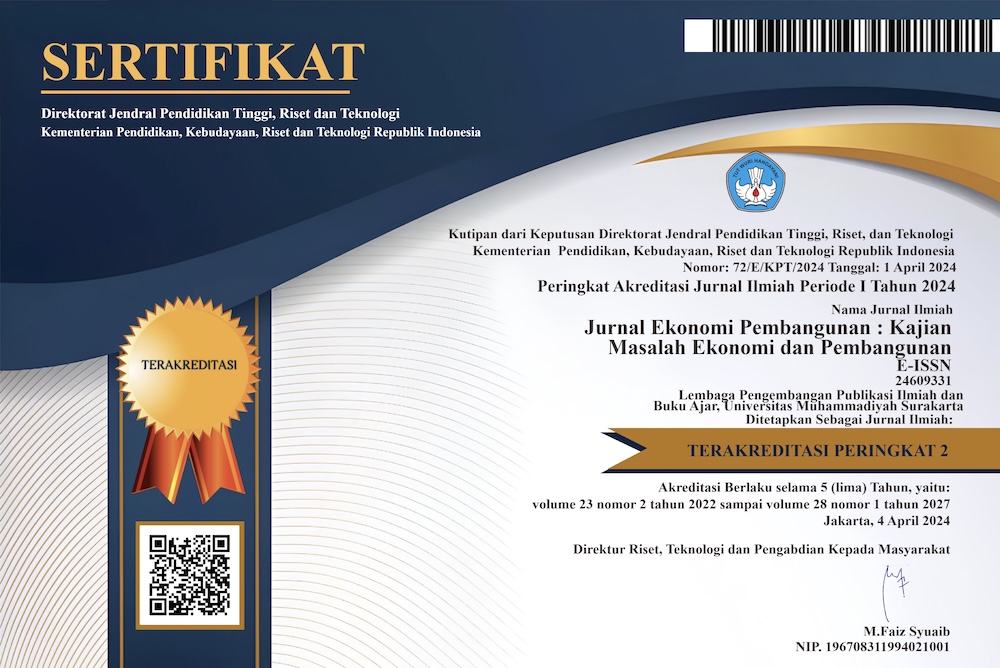Measuring the Effect of Inequality and Human Resource Indicators to Poverty Density in Indonesia
DOI:
https://doi.org/10.23917/jep.v22i2.13631Keywords:
Poverty Density, HDI, GRDP, Unemployed, Panel DataAbstract
The density of the poor occurs because rapid population growth that is not followed by fast economic growth, resulting in a density of poor people in Indonesia. This study aims to analyze the effect of the Poverty gap index-P1, HDI, GRDP, Labor Force on the Density of the Poor in Indonesia in 2015- 2020. This study uses the Poverty gap index-P1 to fill the gap of research. All data obtained from the Central Bureau of Statistics (BPS) of the Republic of Indonesia. The data obtained are in the form of time series and cross-section data in 2015-2020. The analysis technique used is panel data regression. Result of the discussion the poverty gap index-P1 have positive impact to the poverty density indicated by the level of size and the depth of the poor population that increases, and the HDI have negative impact to poverty density. The suggestion from the study is poverty alleviation programs needs to be strengthened and expanding the access of health and employment facilities to the poor is of major importance.















